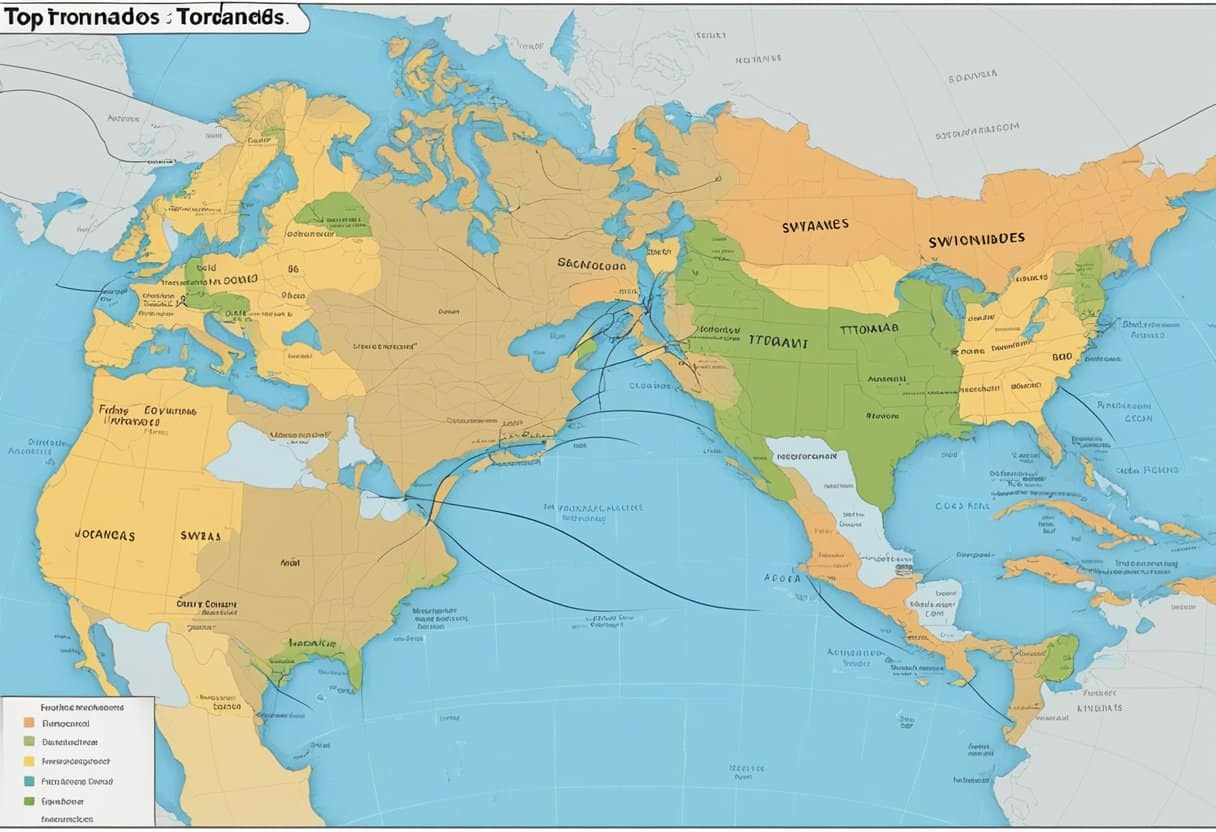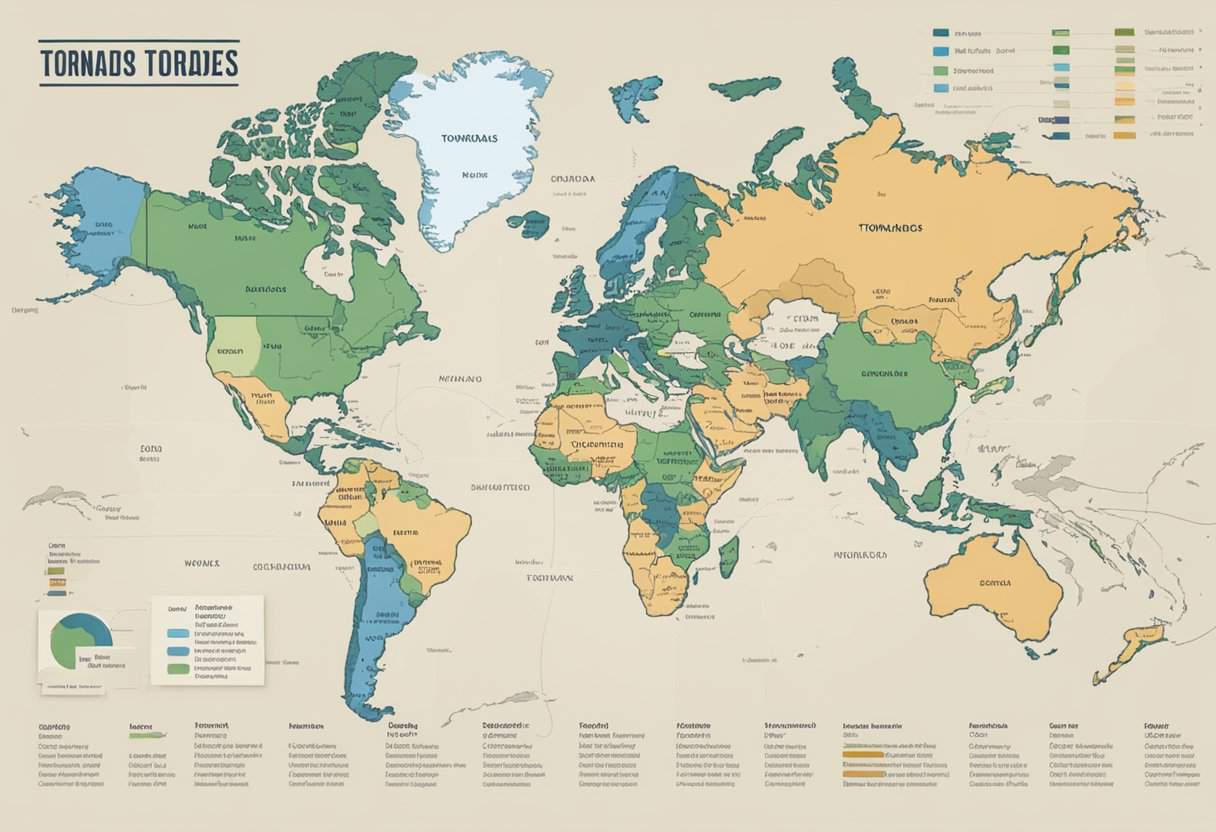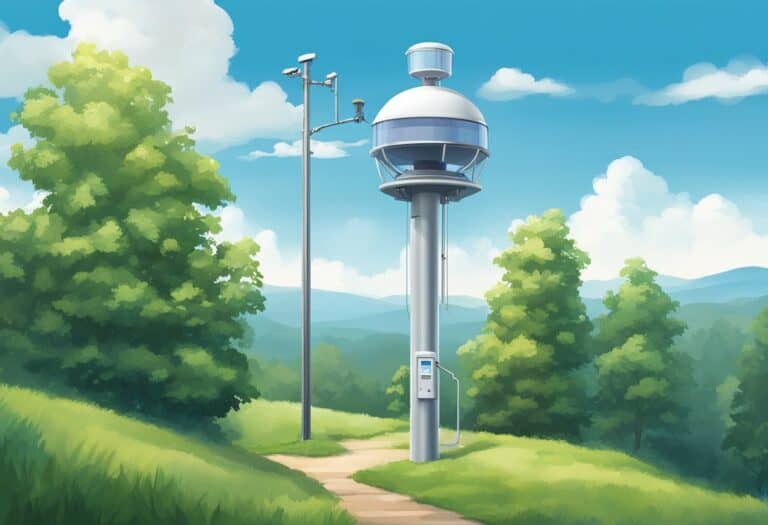Tornadoes are some of the most powerful and unpredictable natural phenomena on Earth, capable of causing widespread destruction in a matter of minutes. To understand the scale and frequency of these events, it’s essential to examine the countries that encounter them most frequently. While many might associate tornadoes primarily with the United States, which indeed has the highest number of tornadoes per year, other countries experience these violent whirlwinds as well.
The global distribution of tornadoes extends far beyond the United States, with occurrences on every continent except Antarctica. However, the intensity and frequency can vary greatly from region to region. When thinking of tornadoes, it’s crucial to consider not just how many occur, but also their potential impact on populated areas, the local infrastructure’s ability to withstand such events, and how the natural landscape might influence their formation. This knowledge is particularly important for establishing safety protocols and preparedness strategies to mitigate the risks associated with these powerful storms.
Tornadoes strike globally, not just US. Though America reigns supreme, Canada, Bangladesh, and even Europe face these twisters. Understanding their distribution helps prepare for their unpredictable wrath. Remember, safety first, wherever you are!
Global Distribution of Tornadoes
Tornadoes are a worldwide phenomenon, affecting various countries across the globe with varying frequency and intensity. Your understanding of tornado distribution is crucial to recognizing the risk and preparedness needed in different regions.
In North America, the United States stands out with the highest number of tornadoes annually. Known as “Tornado Alley,” central USA experiences more tornadoes than any other place on the planet. Canada also records a considerable number of tornado occurrences, albeit fewer and generally less severe than its southern neighbor.
Bangladesh has a notorious history with tornadoes, having experienced some of the deadliest on record. Its high population density exacerbates the impact of such events. In contrast, countries in Europe such as Poland, Italy, Germany, France, and the UK report tornadoes, but they are typically less violent than those on the North American continent.
In the Southern Hemisphere, countries like Argentina and Brazil in South America, as well as South Africa and Australia, face tornado occurrences. Australia’s tornadoes are less frequent but can be quite severe, particularly in the southeastern regions.
Asia sees varied tornado activity: while India and Japan record tornadoes, they are rare in China and Russia. New Zealand occasionally experiences tornadoes, but like its neighbor Australia, they are not a common event.
Lastly, tornadoes are not confined to any single continent or climate, appearing even in unusual places albeit infrequently. It’s essential to note that despite this broad distribution, data collection varies widely, influencing the reported occurrences and intensities. This variability in data reminds you that tornado awareness and preparedness are vital, regardless of your country’s typical activity level.
Characteristics and Formation of Tornadoes
Understanding tornadoes requires knowledge of their formation process, classification, and the environmental conditions that contribute to their development. Now let’s explore the various aspects of tornado characteristics and formation.
Weather Conditions and Tornado Formation
Tornadoes form from severe thunderstorms when changes in wind speed and direction create a horizontal spinning effect in the lower atmosphere. This circulation becomes vertical once it’s affected by an updraft. Conditions typically involve a combination of warm, moist air from the Gulf of Mexico and cooler, dry air from the Rocky Mountains or deserts.
Tornado Classification Scales
The intensity of tornadoes is measured mainly by two scales: the Fujita Scale and the more recent Enhanced Fujita Scale. The scales range from F0/EF0, indicating light damage, to F5/EF5, which describes incredible destruction.
Geographical Features Affecting Tornado Development
Certain geographical features like the Great Plains in the US, known as Tornado Alley, are more prone to tornadoes due to flat land which allows the collision of different air masses. Areas near the Mediterranean Sea also experience tornadoes, albeit less frequently.
Impact of Climate and Seasons on Tornado Activity
Tornado activity can be influenced by overall climate patterns such as El Niño or monsoon season in regions like India. In the US, spring and early summer are the peak seasons for tornadoes, largely influenced by warm, humid air from the Gulf of Mexico.
Weather Radar and Tornado Detection
Advancements in Doppler radar technology have significantly improved tornado detection. Organizations like NOAA utilise these tools to monitor severe weather and issue warnings.
Historical Tornado Events
Significant historical tornadoes, such as the Tri-State Tornado in 1925 and the Elie, Manitoba tornado in 2007, offer crucial data for analyzing tornado patterns and impacts.
Research and Tornado Prediction
Research initiatives, led by entities like the American Meteorological Society and the Tornado and Storm Research Organisation (TORRO), work on improving tornado prediction with field research, theoretical studies, and improved modeling processes.
Measuring and Reporting Tornado Activity
Both the original Fujita Scale and the Enhanced Fujita Scale, developed by a team including Dr. Ted Fujita, allow for consistent reporting of tornado activity by classifying intensity based on damage caused.
Tornado Safety and Preparedness
Safety measures, disseminated by agencies like NOAA and Environment Canada, recommend seeking shelter in a basement or interior room without windows during a tornado and planning drills in advance.
Unique Tornado Phenomena
There are unique tornado phenomena such as waterspouts, commonly seen near bodies of water, and landspouts, which resemble tornadoes but form differently and are often less intense.
Global Response and Recovery from Tornado Disasters
International response to tornado disasters involves rescue and recovery operations, often supported by global organizations and research into improving early warning systems to minimize casualties and fatalities.
International Tornado Research Initiatives
Efforts like those by the American Meteorological Society, University of Manchester researchers like David Schultz, and TORRO contribute to a global understanding of tornadoes.
Public Awareness and Education
Public awareness campaigns aim to educate communities about tornado risks and safety, with materials often provided by NOAA and similar organizations that are knowledgeable about local weather patterns and tornado risks.
Frequently Asked Questions

Tornadoes are a regular meteorological occurrence in several parts of the world. Knowing where they happen most frequently can help you understand the global distribution of these powerful storms.
Which country experiences the highest frequency of tornadoes globally?
The United States records the highest number of tornadoes globally on an annual basis, with averages that significantly surpass those in other countries.
In addition to the United States, what other countries are known for tornado occurrences?
Countries like Canada, Bangladesh, and the United Kingdom also experience a notable number of tornadoes each year.
How does the annual number of tornadoes in the United States compare to other countries?
The United States experiences more tornadoes annually than any other country. Counts can be over a thousand tornadoes per year, which is much higher than figures reported from other countries.
What are the top European countries that report tornado activity?
Some European countries such as the United Kingdom, Germany, and France have higher reports of tornado activity, with detailed databases tracking occurrence and impacts.
Why is tornado activity predominantly high in the United States?
The United States has a unique geography that creates perfect conditions for tornado formation, particularly in the area known as Tornado Alley, where cold dry air from Canada meets warm moist air from the Gulf of Mexico.
Can you list the countries in Asia that are most affected by tornadoes?
Bangladesh is one of the Asian countries most affected by tornadoes, with its high population density making the impacts of such events particularly severe.







